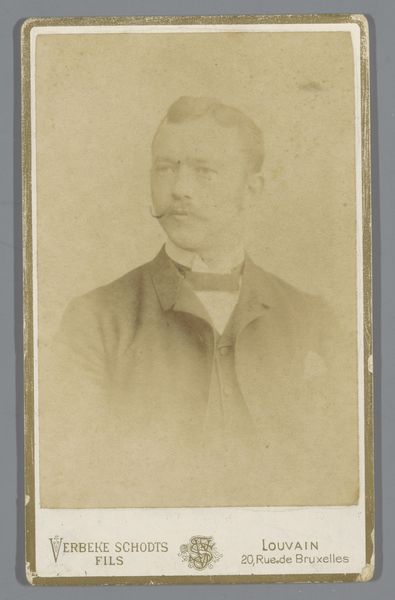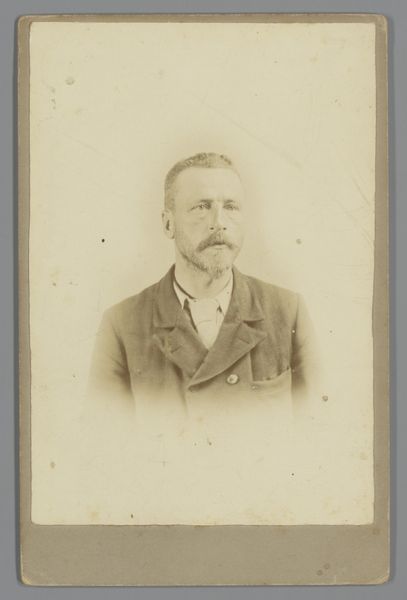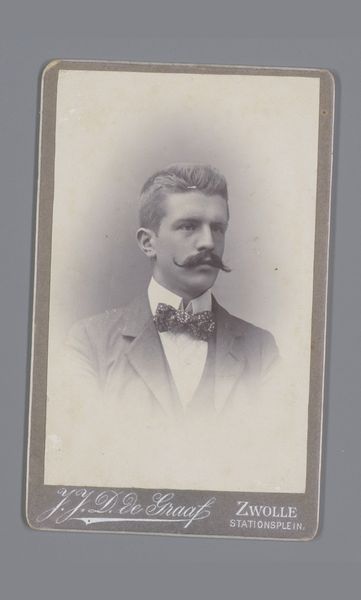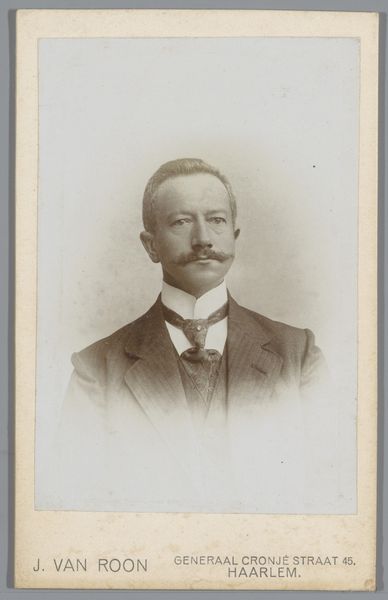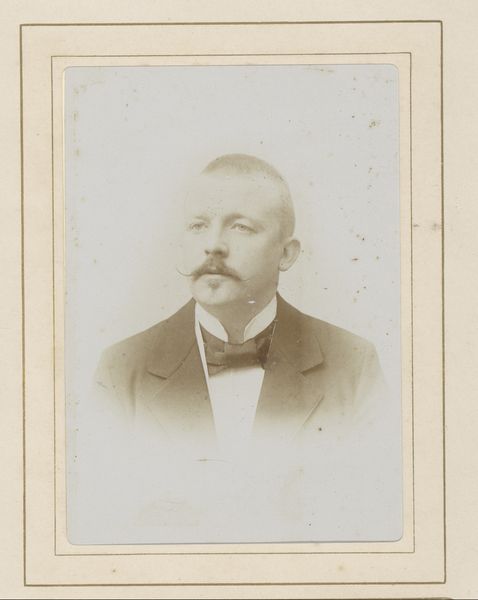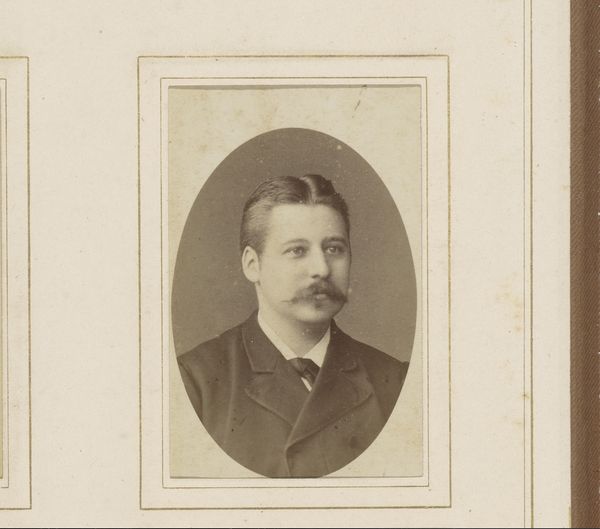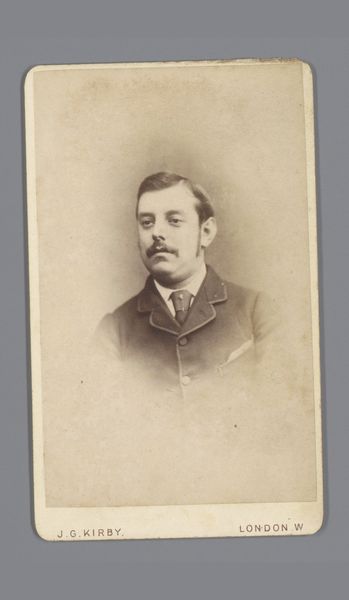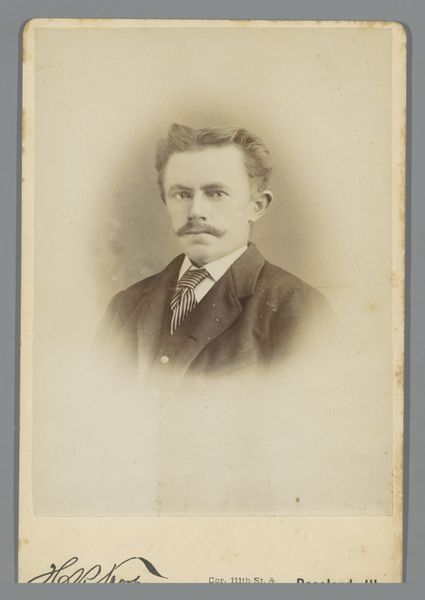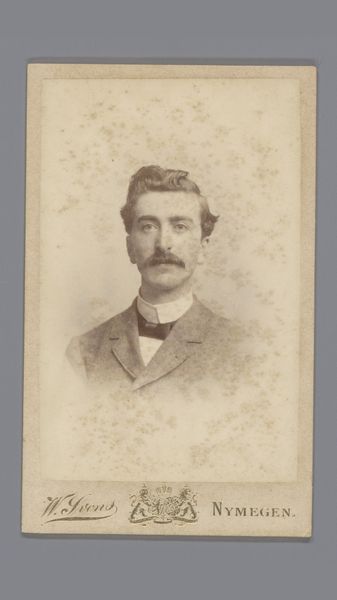
print, photography
#
portrait
# print
#
photography
Dimensions: height 105 mm, width 62 mm
Copyright: Rijks Museum: Open Domain
Jules Delsart captured this portrait of an unknown man through photography, a process that emerged in the 19th century, and offered a new way of image making. The sepia tone comes from the chemical processes used to develop the print. In early photography, controlling these chemical reactions was a skilled craft, requiring meticulous attention to detail. Each print was, in essence, a unique performance of the process. Consider the socio-economic context: photography democratized portraiture, making it accessible to a wider range of people beyond the elite who could afford painted portraits. The rise of photography studios created new jobs, yet also deskilled the labor of image-making. Thinking about materials and making helps us appreciate photography, and other forms of image reproduction, as skilled practices deeply intertwined with social and economic forces. The photograph itself, therefore, embodies a tension between art, craft, and industrial production.
Comments
No comments
Be the first to comment and join the conversation on the ultimate creative platform.
